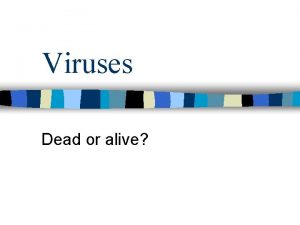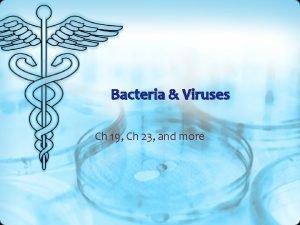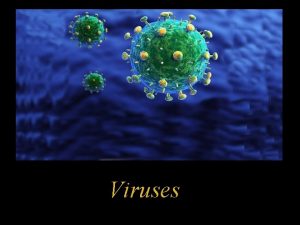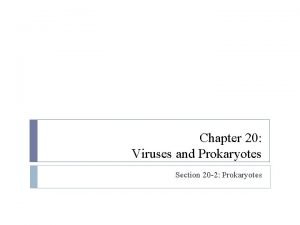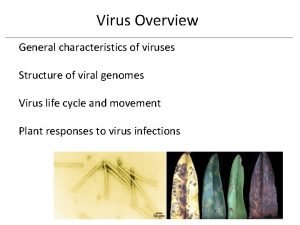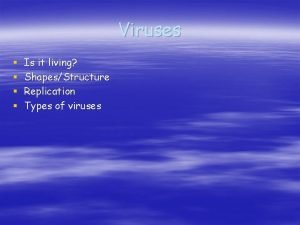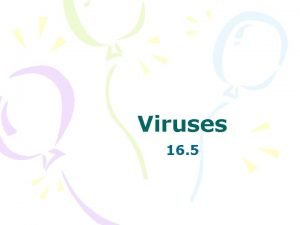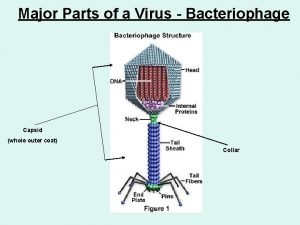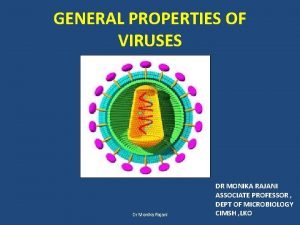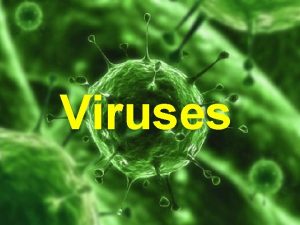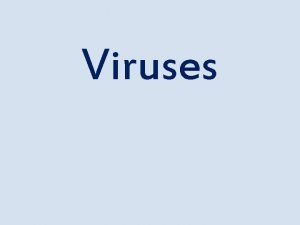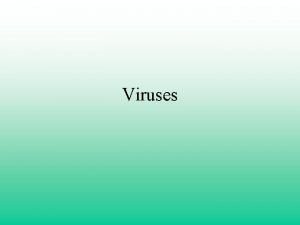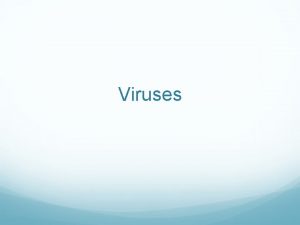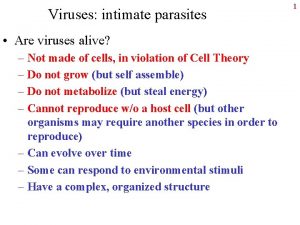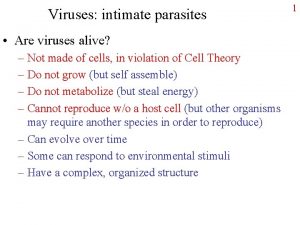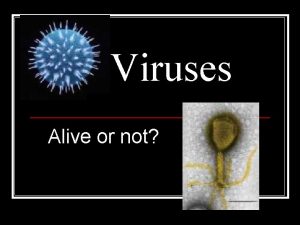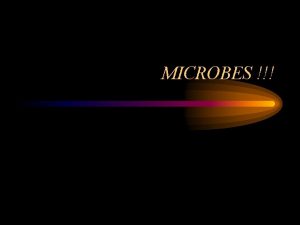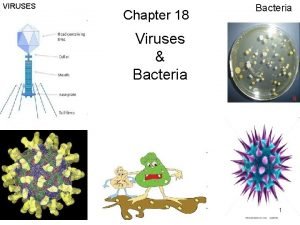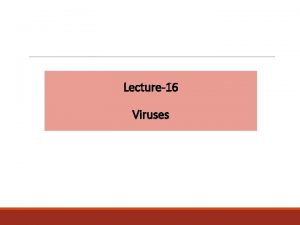Viruses Dead or alive Viruses n What are
















- Slides: 16

Viruses Dead or alive?

Viruses n What are the parts of a virus? n How does a virus replicate? n How do viruses benefit humans? n How do viruses cause disease?

Viruses n At the boundary of life, between the macromolecules (which are not alive) and the prokaryotic cells (which are), lie the viruses and bacteriophages (phages).

Viruses n Viruses depend on the host cells that they infect to reproduce. n When found outside of host cells, viruses exist as a protein coat or capsid, sometimes enclosed within a membrane. (In other words they are dormant until they infect a cell. )

Viral structure n Viruses are not cells. n Basic structure: – Protein coat – Nucleic acid core (RNA or DNA) – Lipoprotein coat • (second coat – only in enveloped viruses)

Virus Categories n DNA viruses – stable, do not mutate rapidly – Single-stranded or doublestranded – Smallpox, Hepatitis B n RNA viruses – mutate rapidly, unstable – Single-stranded or doublestranded – HIV, Rhinovirus HIV Virus

Bacteriophages n attack bacteria (prokaryotes) n Typical phages have hollow heads (where the phage DNA or RNA is stored) n tunnel tails, n the tips of which have the ability to bind to specific molecules on the surface of their target bacteria.

Viruses n Viruses are found everywhere. are parasites responsible for causing many diseases in living things (herpes and HIV in humans, for example) n Viruses

Lytic Cycle n Virus attaches to host cell’s membrane and injects its nucleic acid into the host cell. n The viral nucleic acid takes over protein synthesis, creating new viruses. n The host cell bursts, lyses, releasing the newly formed viruses.

Before attachment Attachment Penetration and uncoating Release Assembly Replication

Lysogenic Cycle n Begins the same way as the Lytic cycle n Does not immediately take over the host cell’s genetic material n Instead – viral DNA is integrated (mixed) with the host cell’s chromosome n Cell is now called a Provirus.


Provirus n May not affect the functioning of the host cell n Every time host cell reproduces, so does the provirus – this can continue for many years n Can activate at any time causing illness

Retrovirus n Is the most complicated replication cycle n RNA viruses n Through reverse transcriptase, the RNA virus will make DNA from RNA within the host cell n This DNA is then integrated into the host cell’s DNA.

Common Viral Diseases n Lysogenic – Herpes simplex 1, herpes simplex 2, hepatitis B, chicken pox n Retrovirus – HIV – All other retroviruses are non-human affecting, although there is some debate

WORK… n. Complete the last diagram n. P. 480 lab 18. 1 problem solving n. P. 483 Q 1 -5
 Alive forevermore
Alive forevermore Are viruses dead or alive
Are viruses dead or alive Mikael ferm
Mikael ferm Unlike lytic viruses, lysogenic viruses do not
Unlike lytic viruses, lysogenic viruses do not /watch?v=dckvspcd8gs
/watch?v=dckvspcd8gs Are viruses alive yes or no
Are viruses alive yes or no He's alive he's alive frankenstein
He's alive he's alive frankenstein Juan soriano la niña muerta; the dead girl; dead infant
Juan soriano la niña muerta; the dead girl; dead infant Chapter 20 viruses and prokaryotes
Chapter 20 viruses and prokaryotes How active viruses multiply
How active viruses multiply Properties of viruses
Properties of viruses Chapter 20 viruses and prokaryotes
Chapter 20 viruses and prokaryotes Bacteriophage characteristics
Bacteriophage characteristics Replication of viruses
Replication of viruses Lytic infection
Lytic infection Parts of the virus
Parts of the virus General properties of viruses
General properties of viruses

